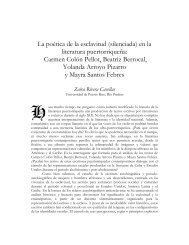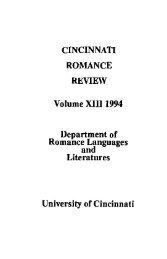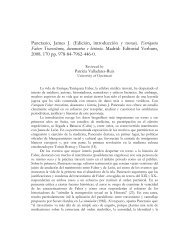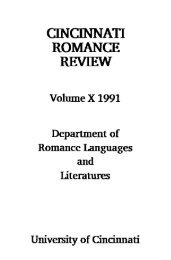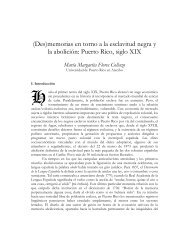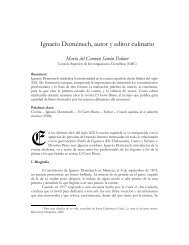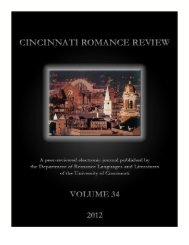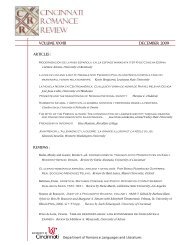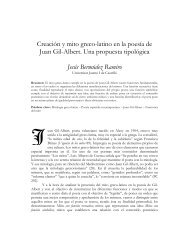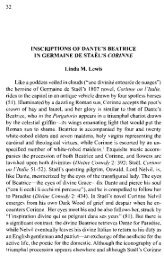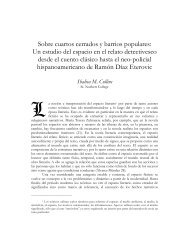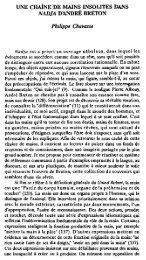Volume 30 (2011) - Cincinnati Romance Review
Volume 30 (2011) - Cincinnati Romance Review
Volume 30 (2011) - Cincinnati Romance Review
You also want an ePaper? Increase the reach of your titles
YUMPU automatically turns print PDFs into web optimized ePapers that Google loves.
“The Erotic as Power”: Sexual Agency and the<br />
Erotic in the Work of Luz Argentina Chiriboga<br />
and Mayra Santos Febres<br />
Dorothy E. Mosby<br />
Mount Holyoke College<br />
Baila la negra el son/con el vientre desnudo/y las nalgas<br />
redondas./ Baila la negra el son/ al ritmo de la plena,/<br />
en medio de la noche ponceña.<br />
From “Baila la negra el son” by Francisco<br />
Negroni Mattei (1896-1937)<br />
“As a deep lode in our erotic lives and knowledge,<br />
how does our sexuality enrich us and empower<br />
our actions?”<br />
From Zami by Audre Lorde<br />
“Sobre estas pieles de nosotras se han escrito<br />
demasiadas cosas, demasiadas historias y<br />
afiliaciones, propiedades y fugas. Es hora de que<br />
tomemos estos signos en nuestras manos para<br />
reconfigurarlos de nuevas maneras, a ver lo que<br />
sale.”<br />
From Sobre piel y papel by Mayra Santos-Febres<br />
When they were not rendered invisible and voiceless by those who shaped<br />
the “lettered city,” for much of the history of Latin American literature<br />
before the mid-twentieth century, Afro-descendant women were<br />
portrayed as hypersensual and hypersexual bodies devoid of the<br />
humanity sometimes ascribed to white women. The negrista movement, in particular,<br />
during the first three decades of the twentieth century was inspired by the folkloric and<br />
exotic elements of the heretofore marginalized black cultures of the Americas and<br />
focused largely on the rhythms of African-style drumming, dance, music, speech<br />
patterns, and most importantly the Black and Mulatto body. During the negrista<br />
movement, Afro-descendant women’s sexuality was brought to the forefront of<br />
Hispanic American poetry by male writers, the majority of them white or whiteidentified<br />
and bourgeois, such as Luis Palés Matos, Emilio Ballagas, Ramón Güirao, and



